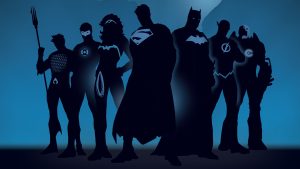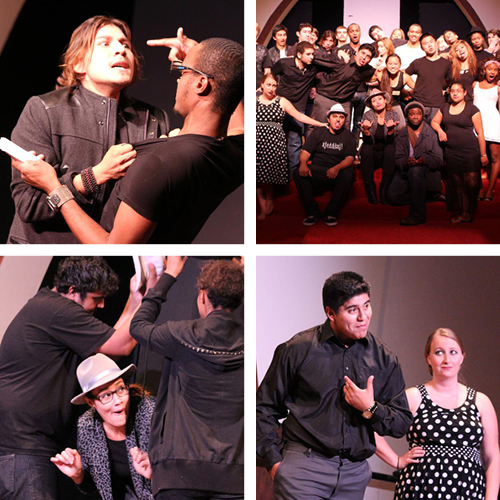Thirty Criminal Justice students find their seats, chatting amongst themselves until their guest lecturer, Ms. Kravig, arrives. Mrs. Garcia’s Justice Literature class will be learning something a little out of the ordinary today: the role of superheroes in fiction.
It might seem strange, at first, to study fantastical superheroes on a campus that focuses on law, forensics, and public safety. But Ms. Kravig’s lecture introduces students to the idea of how comic books and the superhero archetypes within them are echoes of the society that produces them. The need, or lack of need, for superheroes is a direct reflection of current events—beginning with the Golden Age of comics, when bigger-than-life heroes were created to fight tangible villains like Adolf Hitler. Nowadays, both graphic novels and comics showcase a totally different type of hero; one immersed in gritty realism and social justice.
 With an emphasis on diversity, survival, betrayal, and justice, comics have become a space where popular culture can intersect with modern criminology. As a post-9/11 United States deals with issues such as xenophobia, economic distress, anxiety about the role of Americans on a global scale, police corruption, and war, the fictional heroes of universes created by companies like Marvel and DC must also face similar problems.
With an emphasis on diversity, survival, betrayal, and justice, comics have become a space where popular culture can intersect with modern criminology. As a post-9/11 United States deals with issues such as xenophobia, economic distress, anxiety about the role of Americans on a global scale, police corruption, and war, the fictional heroes of universes created by companies like Marvel and DC must also face similar problems.
Immersing oneself in these mirror images of our world can provide a reader with similar experiences to reading other fiction. Fiction gives readers a lens with which to contemplate real-life problems, often leading to a more profound understanding. Likewise, comics “provide readers an opportunity to move beyond knee-jerk reactions and explore the consequences of power and authority,” write Phillips and Strobl in Comic Book Crime (2013).
By the end of the lecture—which includes viewing a section of the animated film Batman Beyond: Return of the Joker (2000)—the students are full of questions regarding vigilantes and the role of the police force in a made-up city like Gotham, where Batman is often the only line of defense between villains and civilians.
“The structure of comics and graphic novels is one that requires a lot of interactivity,” explains Ms. Kravig. “A comic reader is required to interpret the actions, symbols, and colors in the art in a way that complements the dialogue written for the characters. Criminal Justice students are our future police officers, lawyers, and judges, and I think that comic books are perfect reading material for these students because it presents them with the opportunity to analyze the moral and ethical dilemmas that superheroes face as they fight crime. When paired with critical thinking skills and the knowledge they’ve gained from their CJ courses, comics allow CJ students the opportunity to navigate the precarious nature of power and authority and to decide whether the justice presented in comics is really justice at all.”




